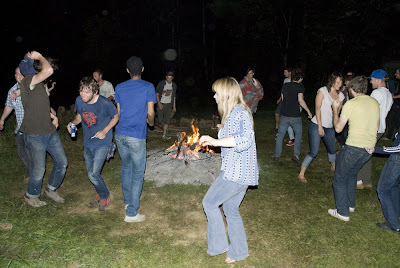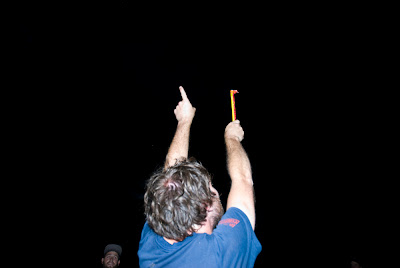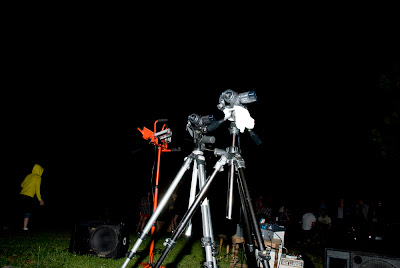 “I wanna be startin’ something by Michael Jackson on repeat, for 6 hours, dancing in the woods at night (Chesterhill, OH)”
“I wanna be startin’ something by Michael Jackson on repeat, for 6 hours, dancing in the woods at night (Chesterhill, OH)”
--dimensions variable installation, 6 hour video and stills, 2009
Jason Lazarus"We are out of our joy. He is out of his pain. ... He was constantly challenged in the press and all he really wanted to be was the greatest entertainer and he was that."
Politician and civil rights activist the Rev. Jesse Jackson“MJ, when I was 10, you were a god. Later on, things got complicated. R.I.P.”
Jason Lazarus’ Facebook and New York Times website post, June 25th 2009


When Michael Jackson died, I was sitting at my computer, where I received a text message that seemed like simple text-speak, but didn’t quite make sense. News of a death via text-message seems a bit inappropriate—but in this case I could imagine the news spreading perfectly at light-speed--like an uber-terrorist weapon or a dream marketing campaign for some new product. All somber formalities usually associated death were off the table. Within an hour all cars in Chicago became nodes in a sustainable network of Michael Jackson music that ebbed and flowed within earshot, usually with Thriller as the eulogy of choice.

Ironically, a few months before I was dancing to “Wanna be startin’ something” on repeat in my room after an evening coffee buzz. I had overlooked this song as singular, driving yet meditative. Listening to a song on repeat for a long period of time is obstensibly a solo-activity.

Months later in the woods, with Michael dead, I initiated 30+ residents of the Harold Arts residency to start dancing at 11:30pm—a later start than I anticipated, to MJ's "Wanna be startin' something" on repeat. Initially, I found myself embarrassed—the translation from my bedroom to a group-performative-live-time video piece seemed unnatural. I danced. Others danced. Others watched. Energy spiked and waned. At epic moments of the dancing, 25 participants self-organized into choreographed dance routines and lit fireworks. Other moments found individual dancers having very interior moments enabled by what athletes call a ‘running high.’ Others retreated 20 feet behind the twin recording video cameras to take in the spectacle for hours on end. The near-end of the video is subsumed by rote movements of the handful of participants fatigued into a stupor.



The artfulness of this project does not rest in a Chris Burden-like unbroken physical endurance or a Dan Graham questioning of the relationship between the camera and its subjects. Much of it occurs in the last 40 seconds of the video when we took the video camera off the tripod, after 6 hours of capturing non-stop dancing, said goodbye to Michael, and then turned the camera around to the tree-line to show the viewers the sun was rising.














